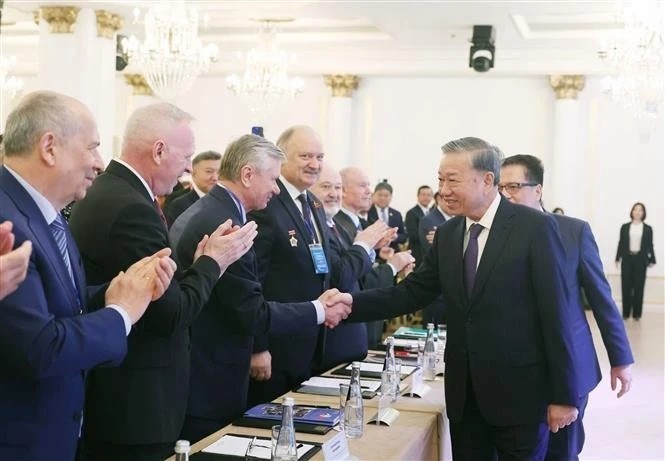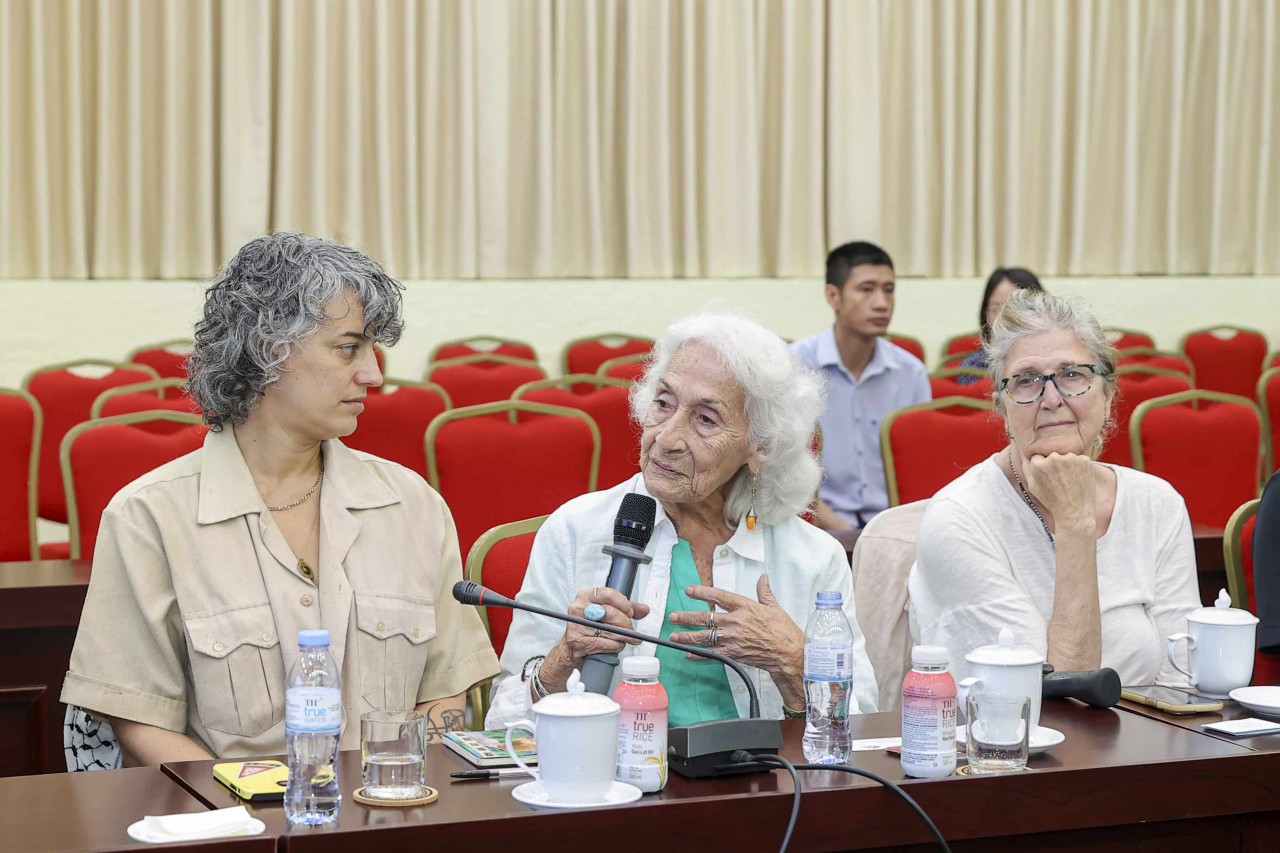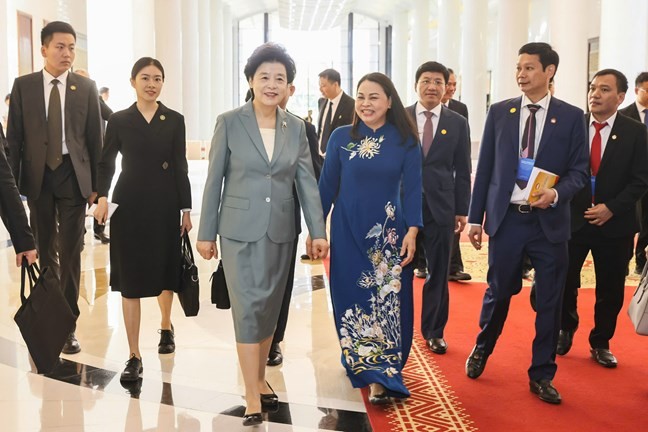Ceramic Walls - Message to Promote Cultures
Foreign Culture on Vietnamese Ceramics
Vietnam is one of the cradles of world pottery. From the soil, water, and fire, under the talented and creative hands of Vietnamese artisans, ceramic works are born with high artistic value, showing the flow of culture and history of the nation through each region and historical period.
At the end of June, a ceramic painting about the celebration of 30 years of diplomatic relations between Vietnam and Kazakhstan was completed and inaugurated on the campus of the Diplomatic Academy of Vietnam. This is a gift from the Government and people of Kazakhstan to the Academy.
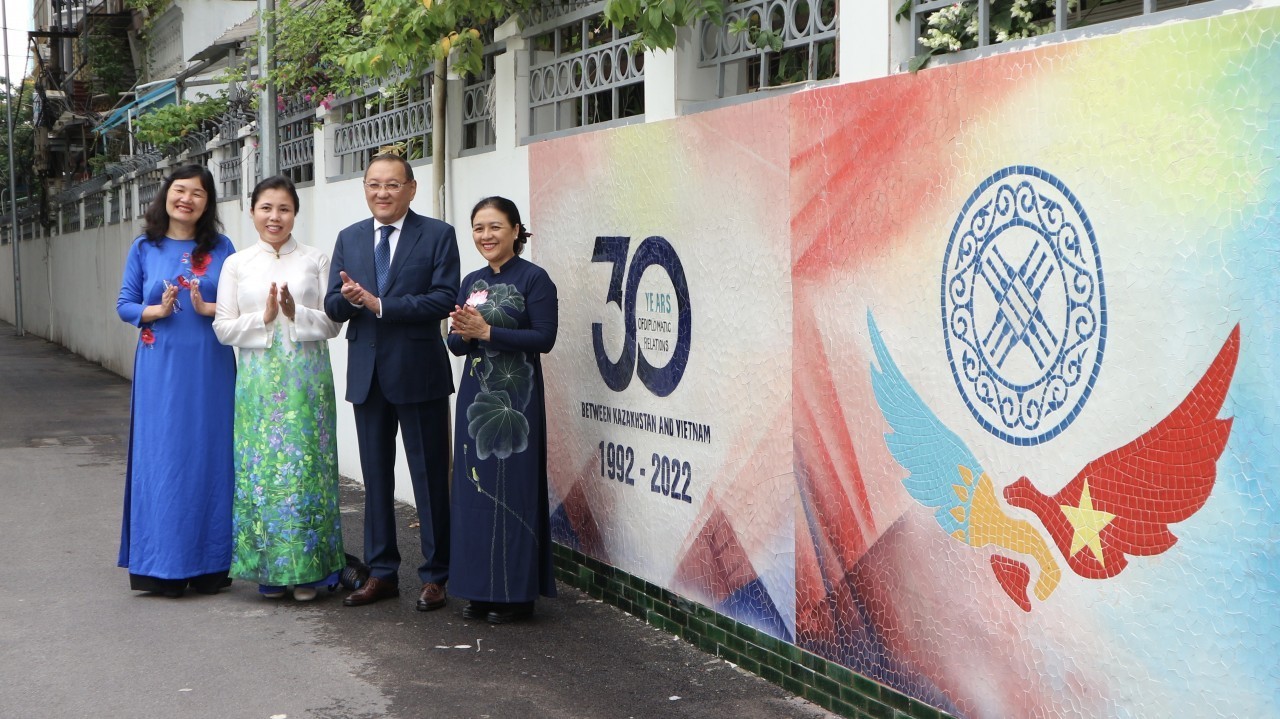 |
| Chairman of the Vietnam Union of Friendship Organizations Nguyen Phuong Nga, Ambassador of Kazakhstan to Vietnam Yerlan Baizhanov, painter Nguyen Thu Thuy, Acting Director of the Diplomatic Academy of Vietnam Pham Lan Dung took a photo next to a wall painting. (Photo: Vu Khanh). |
The painting is 14m long, 2m high, representing the artwork of famous Kazakh painter Leyla Mahat - Chairman of the Art Council of the Kulanshi Center for Contemporary Art in Astana city, President of the Asian – European Art Academy of Kazakhstan and Associate Professor of the Faculty of Painting and Sculpture of Kazakh National University of Fine Arts.
The painting is symbolic of the typical beauty of the old Kazakh culture with an ancient stone engraved with ancient Kazakh script characters. Strong horses attached to the traditional nomadic life on the vast steppes among the magical seas of clouds have become the main subject of many of Leyla's paintings. The connection from tradition to the present is shown at the end of the painting with a young man and woman like from the movie Avatar coming out with the iconic Kazakh pattern on their foreheads.
Nguyen Thu Thuy, the painter who conveyed Leyla's painting into traditional Vietnamese ceramics said: "I am very honored and proud to paint this important ceramic work in celebration of 30 years of Vietnam - Kazakhstan diplomatic relations. I hope that through ceramic paintings that harmoniously combine the art of Vietnam and other countries, international friends and partners will know more about our cultural values”.
Previously, in May, on the launching of the Vietnam-US Cooperation Center, the US Embassy in Vietnam and the Diplomatic Academy of Vietnam introduced a ceramic painting of Vietnam-US Friendship to the public.
The 25m long, 1.8m high painting on the wall of the Academy campus, which is located right opposite the Vietnam-US Cooperation Center, shows the majestic landscape of the Grand Canyon - a natural wonder of the world in the state of Arizona. Next are the iconic images of America such as San Francisco's Golden Gate Bridge on the West Coast; New York's Empire State Building on the East Coast standing out against the American flag; the Statue of Liberty in New York; the portraits of four US presidents George Washington, Thomas Jefferson, Theodore Roosevelt and Abraham Lincoln which are carved on Mount Rushmore in the southern Midwestern state of South Dakota.
In the ceramic painting, symbols of the natural and cultural heritage of the US and Vietnam co-existed, interwoven in a special way. Khue Van Cac (Constellation of Literature Pavilion) stands out in the background of the Vietnamese national flag placed parallel to the US Capitol building in Washington DC, interwoven with the blooming lotus pond of the capital Hanoi.
The Temple of Literature, the first university in Vietnam, is painted together with the prestigious Harvard University of the US. At the end of the picture is the magnificent view of Ha Long Bay. Thousands of small mosaic tiles are put together to create the shimmering colors of the mountains covered in chlorophyll green, reflected on the blue water of the legendary Ha Long Bay.
Speaking at the ceremony, US Ambassador Knapper said: “The US and Vietnam are both proud to possess two unique natural wonders of the world. It is a symbol of the natural beauty, culture, and history of the two nations, which will help us to understand each other better in the process of preserving and promoting the special values that nature offers."
A Bridge to Connect Friendship between Countries
Among many projects that Nguyen Thu Thuy has participated in, the Ceramic Road project along the Red River is considered one of the typical outdoor artworks of Hanoi. The Guinness World awarded the record for the world's largest ceramic painting on the occasion of the 1,000th anniversary of Thang Long - Hanoi in 2010.
The ceramic road has a length of 3,850m with an area of 6,950m2. It includes many paintings depicting national history from Dong Son era to the dynasties of Ly, Tran, Le, and Nguyen; reproducing typical patterns on brocade. There are also ceramic paintings by Vietnamese and international children with the theme of Hanoi - the City for Peace, and many contemporary paintings by Vietnamese and international artists.
This project was participated by 20 Vietnamese painters, 100 artisans and craftsmen, 15 international artists from 12 countries, 50 art students, 300 Vietnamese and international children.
The project makes a strong impression on domestic and international tourists to Hanoi by the images depicting many values of Vietnamese culture, from traditional folk to modern images, reflecting the period of Doi Moi (reform) and development. It also represents the cultural characteristics of many countries in the world on the traditional ceramic material of Vietnam.
On the Ceramic Road, there are paintings of many countries such as Argentina, Chile, Venezuela, Sri Lanka... Visitors can see the image of a natural stone called "the Lion rock" which is nearly 200m high standing upright in the blue sky, one of the most impressive scenes of Sri Lanka. Many other familiar images are also painted such as the scene of fishermen fishing on stilts, traditional Kandyan dancers performing for a better crop, the Argentina tango dance, and the colorful tropical natural landscape.
Nguyen Thu Thuy said that international friends love this work. They shared that through this project, they can see the typical cultural features of Hanoi and other regions of Vietnam.
Besides, Embassies also want to have the image of their country on the Ceramic Road as a way of implying that cultural diversities gather in Hanoi. Not only have artistic meaning, but these paintings also play a role in deepening affection and understanding and strengthening the friendship and cooperation between Vietnam and countries around the world.
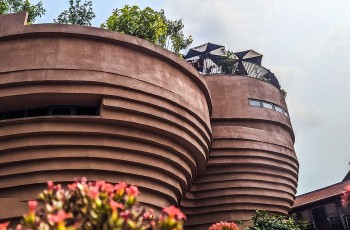 | How to Enjoy a Fun Day Trip in Bat Trang Pottery Museum Bat Trang Ceramic Museum is becoming one of the new attractions of Hanoians, here's how you can enjoy all of it in just one day. |
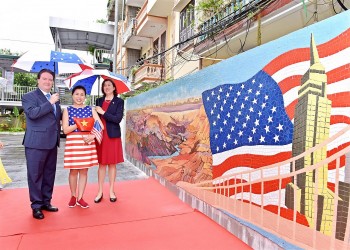 | Mural Honors Cultural Heritage of Vietnam, US A ceramic mosaic mural named "Vietnam - US friendship" depicting the natural and cultural heritages of the two countries, was just revealed in Hanoi |
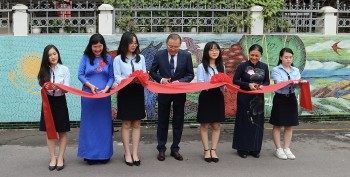 | Ceramic Mosaic Mural Marks Vietnam-Kazakhstan's 30-Year Anniversary A ceramic mosaic mural depicting the image of Kazakhstan, was just unveiled in Hanoi |
Recommended
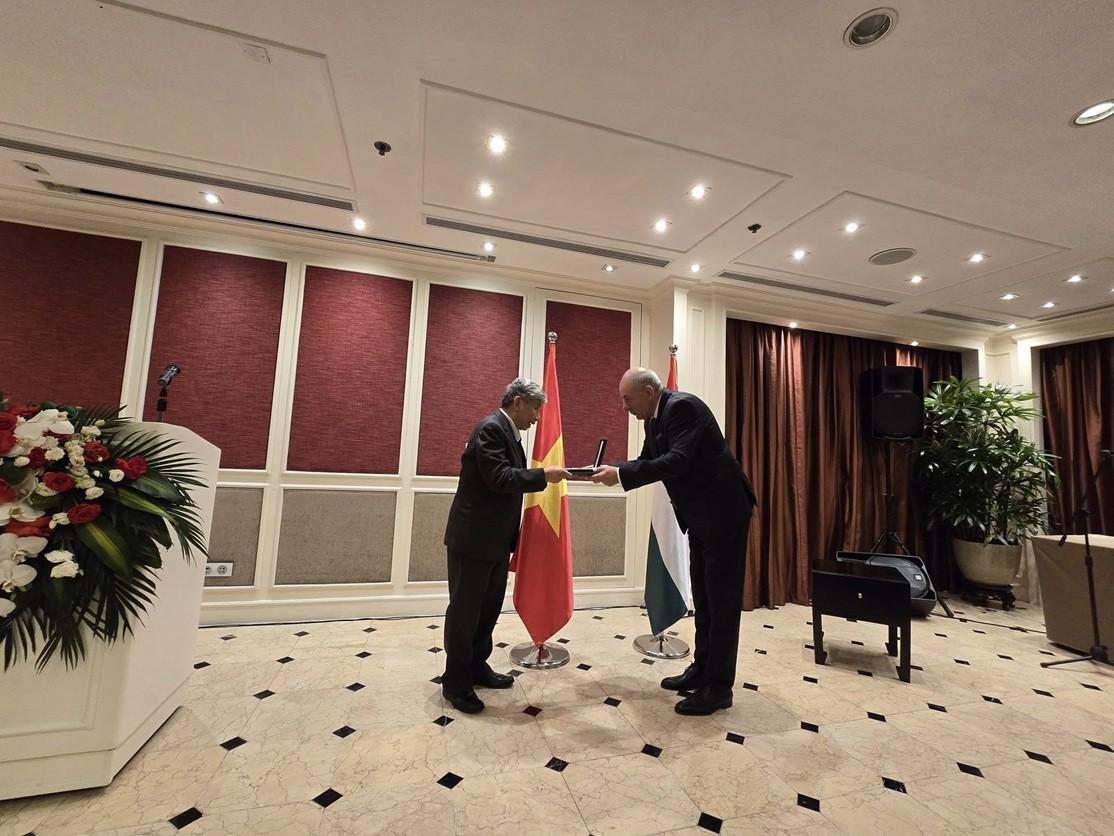 Friendship
Friendship
Dr. Vu Hoai Chuong Receives Hungary's Knight Cross Order
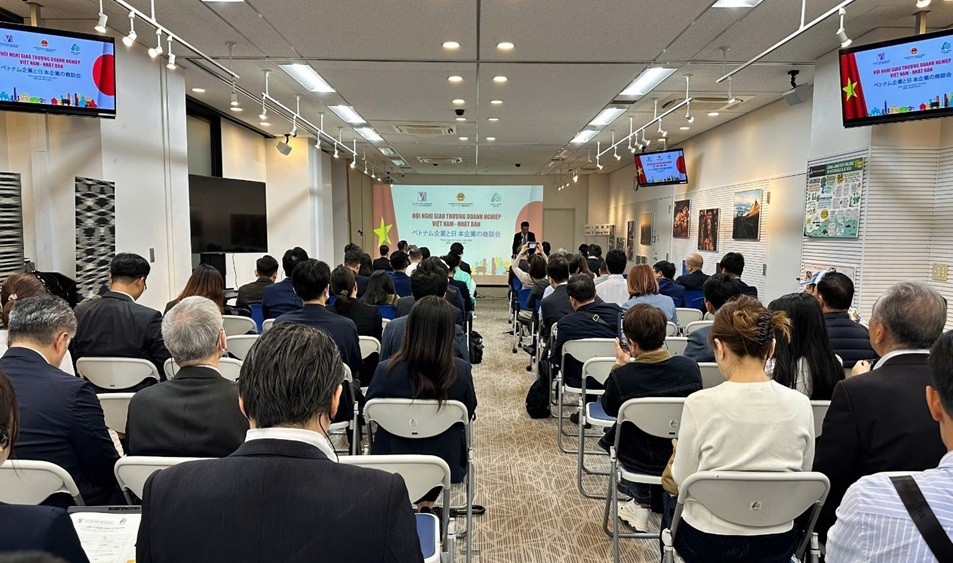 Friendship
Friendship
Promoting Vietnam - Japan Economic Cooperation
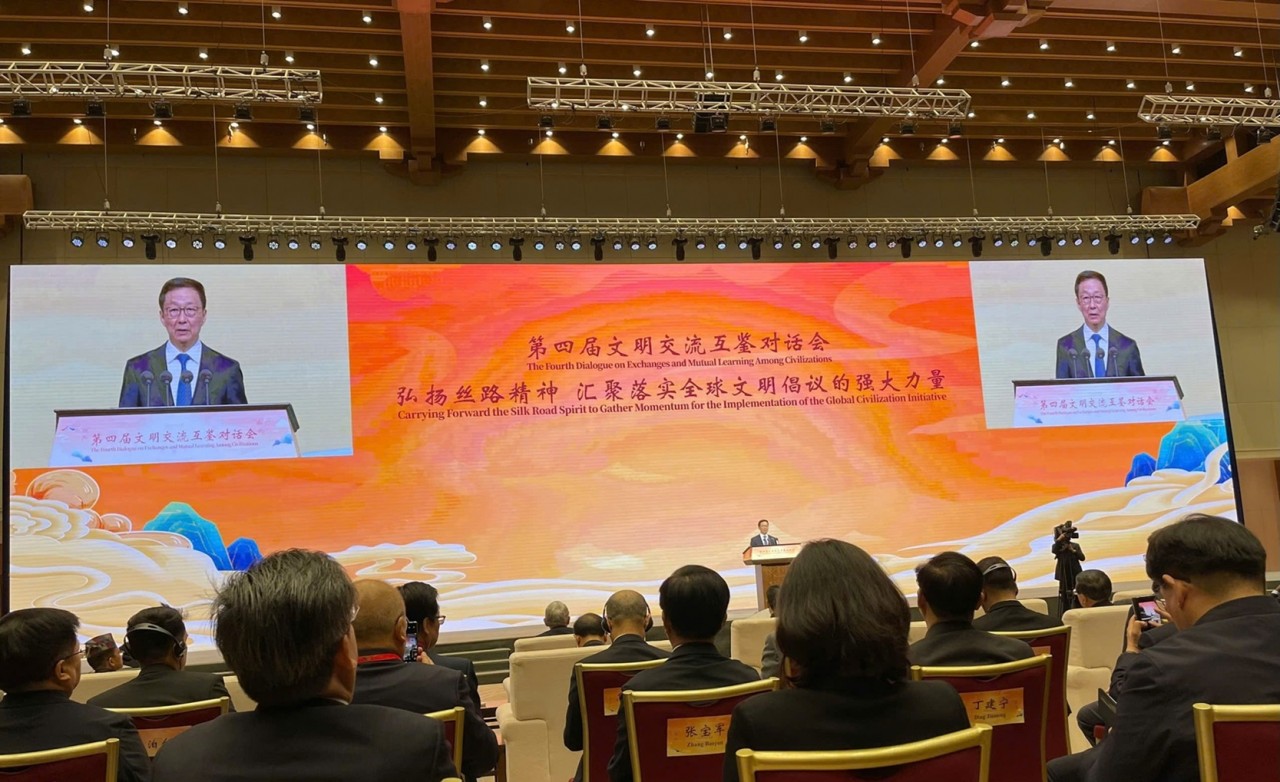 Friendship
Friendship
VUFO Attends Fourth Dialogue on Exchange and Mutual Learning among Civilizations
 Friendship
Friendship
COPI (US) Provides Free Medical Check-Ups for Nearly 1,000 People in Quang Nam
Popular article
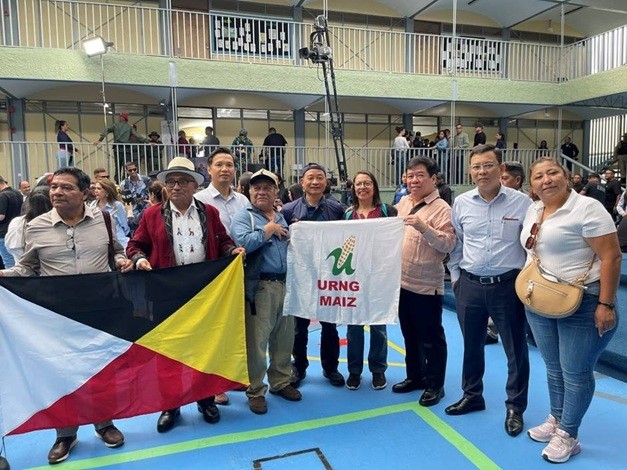 Focus
Focus
Strengthen Solidarity and Friendship Between Vietnam and Venezuela
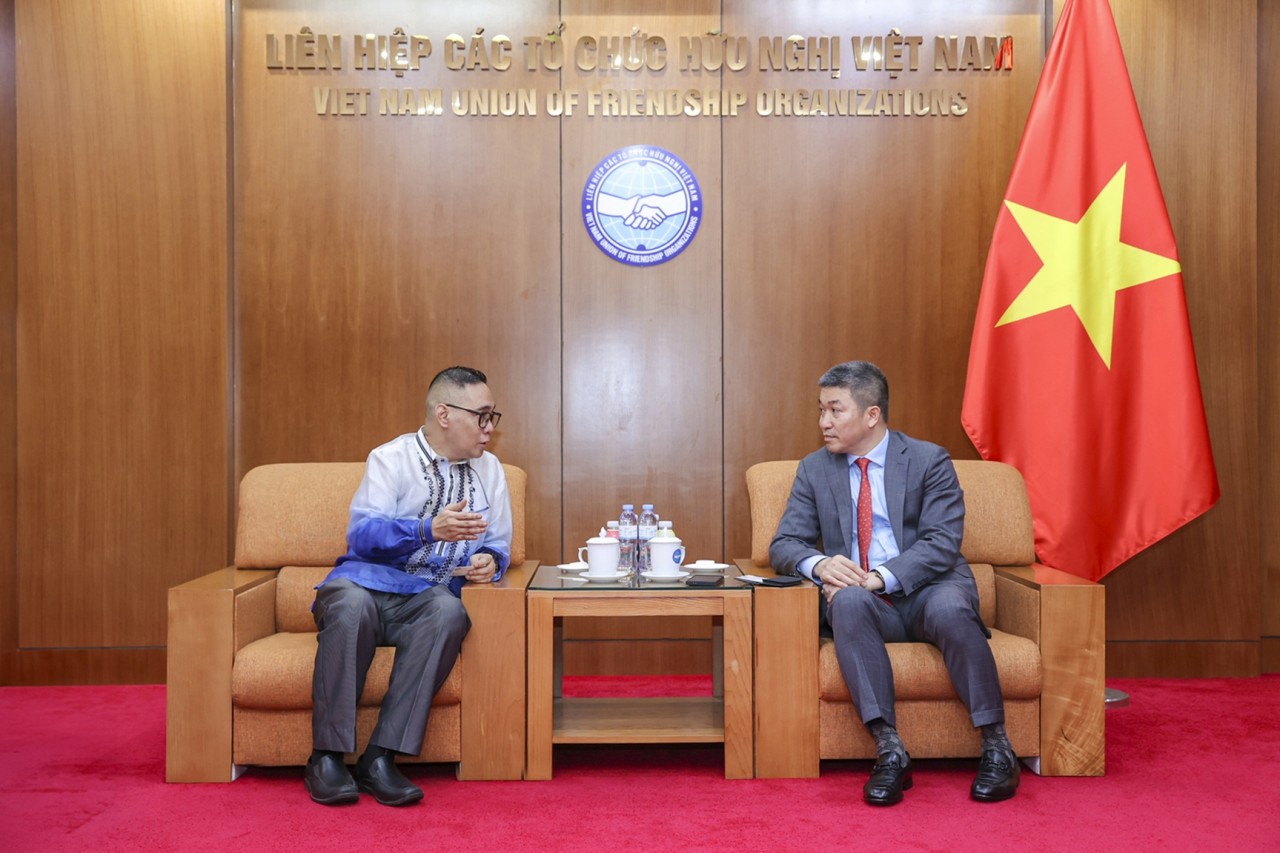 Friendship
Friendship
VUFO Supports Initiatives to Enhance People-to-people Exchanges between Vietnam and the Philippines
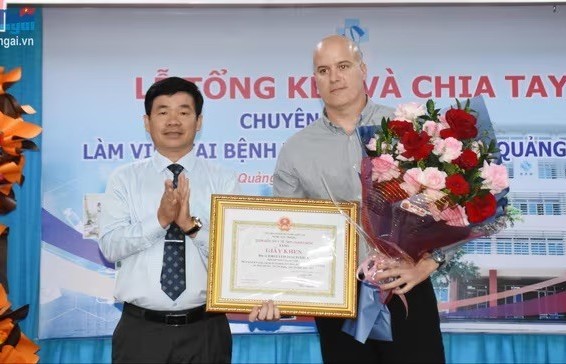 Friendship
Friendship
Quang Ngai Recognizes Cuban Health Experts' Contributions to Mother and Child Care
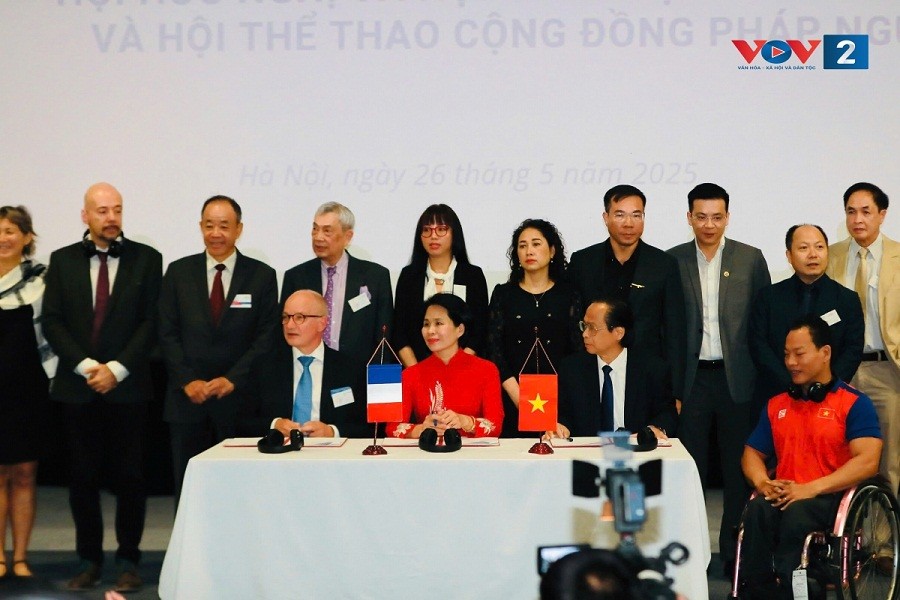 Friendship
Friendship




